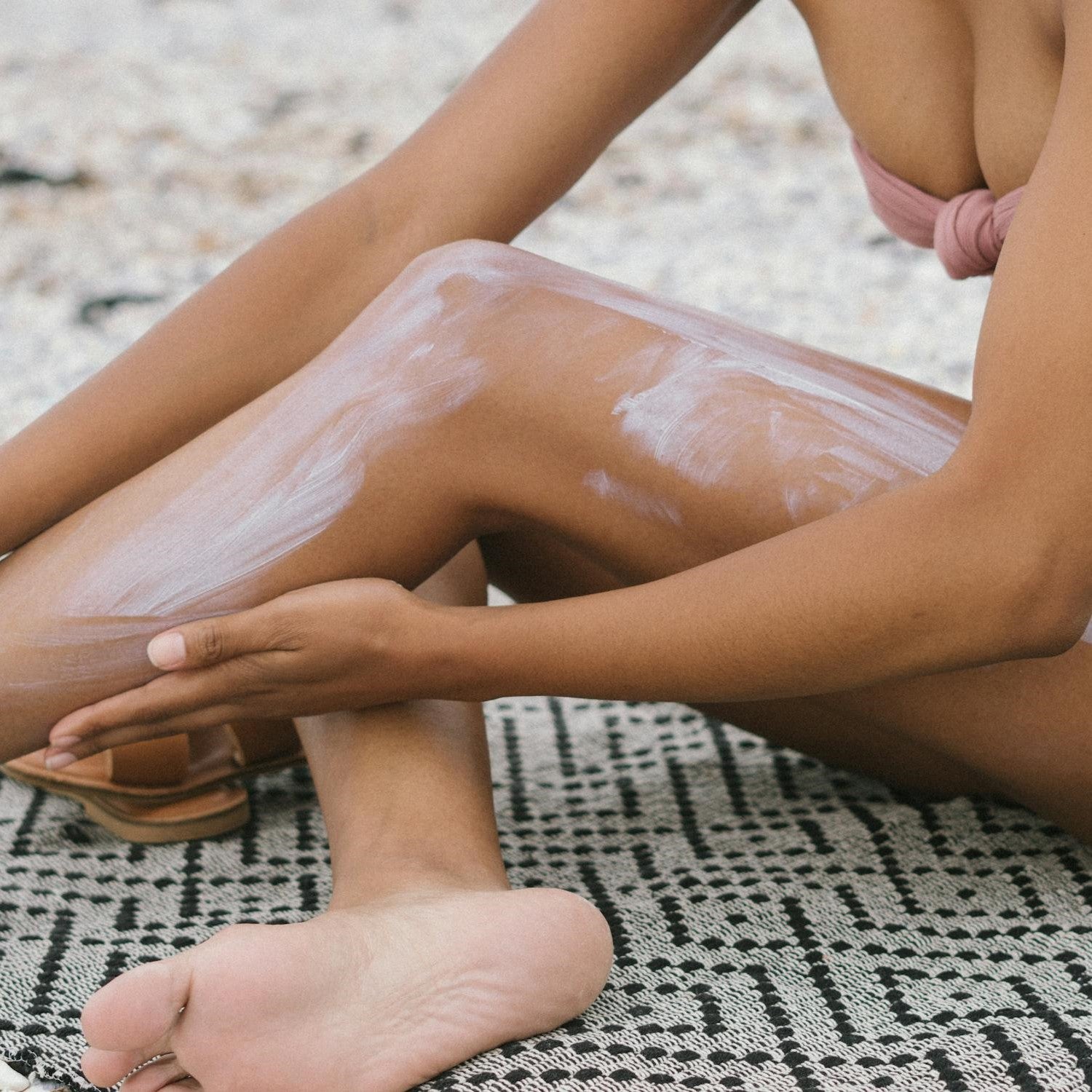Mineral Sunscreens Have Potential Hidden Dangers, Too

This is an important topic that we prefer to leave to the journalists and is a repost of this article by Anna Edney:
Mineral Sunscreens BOS Chemical Booster Draws Safety Concerns - Bloomberg
For years, the main complaint against mineral sunscreens was that their thick, white formulations left people looking like ghosts. Today that’s less of an issue. Many mineral varieties advertise that they go on clear, which has helped bring around consumers who had already heard them promoted as healthier and more environmentally friendly than chemical sunscreens.
One recently popular ingredient for reducing pallor is butyloctyl salicylate (BOS), which the industry considers a “booster.” Boosters walk a fine line. They supposedly improve a sunscreen’s ability to block ultraviolet rays without doing the blocking themselves—and, in the case of BOS, also purport to improve texture. Because of this, manufacturers argue that boosters are inactive compounds, not the active ones that are the primary defense against the sun. These need review by the US Food and Drug Administration, which regulates sunscreens as nonprescription drugs.
While I was working on a Bloomberg Businessweek story about potentially dangerous ingredients in chemical sunscreens—including 12 that have attracted FDA scrutiny since 2019 because they’re absorbed into users’ skin at higher levels than originally thought—someone in the industry suggested I also look at BOS. (This person doesn’t want to be named for fear of professional reprisals.) BOS is structurally similar to the chemical compound known as octisalate, according to five people I talked to with expertise in chemistry, toxicology and biology. Octisalate is one of the 12 ingredients on the FDA’s list and a big part of why critics are targeting BOS and not other boosters.
Generally, sunscreens with an SPF of 30 provide adequate protection. To hit that in mineral varieties, companies using BOS often apply a formula that’s 15% to 16% zinc or zinc and titanium dioxide—active ingredients the FDA says are safe—plus the booster. Manufacturers don’t have to provide the concentrations of inactive ingredients, but they’re generally listed in order of how much is used. BOS is almost always listed in the top five in many mainstream brands, including Beiersdorf’s Coppertone, Supergoop!, Laboratoires Expanscience’s Babo Botanicals, Edgewell Personal Care’s Banana Boat, Sun Bum and Hain Celestial Group’s Alba Botanica.
And just because it isn’t in one product from a company doesn’t mean it isn’t in others: Kenvue Inc.’s Neutrogena line has BOS in its chemical sunscreens but not in its mineral ones. Thinksport generally doesn’t use it—except in two spray products. SC Johnson & Son Inc.’s Babyganics puts it in almost all of its mineral sunscreens except one stick version. Bare Republic uses it in half of the 16 mineral sunscreens on its website. (None of the companies returned requests for comment, nor did the FDA.)
Critics say having a substance that closely resembles a chemical sunscreen ingredient lurking in mineral varieties is misleading for two main reasons.
First, many people have switched to mineral options because chemical versions have come under fire for damaging coral reefs. Hawaii banned the sale of sunscreens with two chemical ingredients on the FDA’s list, oxybenzone and octinoxate, starting in 2021. Two counties in the state, including Maui, have since prohibited the sale of all chemical sunscreens. If consumers switch to mineral sunscreens to save coral reefs, and the products contain BOS, it’s unclear how much these purchasing decisions are really helping.
Second, a lot of people use mineral sunscreens because they’re queasy about lathering their bodies with chemicals. To be clear, octisalate, the chemical ingredient that’s most like BOS, isn’t the worst of the ones the FDA is looking at. Three others—avobenzone, homosalate and oxybenzone—are known as endocrine disruptors, which can upset the balance of hormones and lead to reproductive issues or even cancer. But given that the FDA said it couldn’t deem any of the 12 chemical sunscreen ingredients safe without more data, many people try to avoid them altogether.
One potential health issue with BOS is that it’s derived from salicylic acid and is part of the salicylate family of compounds. In 2021 the European Chemicals Agency raised concerns that salicylates have the potential to harm fetuses. The agency suggested that salicylates be flagged as suspected reproductive toxicants that can have adverse effects on sexual function, fertility and human development. The European Commission, which regulates sunscreens, hasn’t done so for BOS. (A spokesperson didn’t respond to questions about reproductive concerns related to BOS.)
Aspirin is a salicylate, and pregnant people are advised not to take it at full strength because it can cause birth defects. The American College of Obstetricians and Gynecologists, however, has said treating acne with topical products containing salicylic acid is safe. They typically come in concentrations no higher than 2% and are sold as spot treatments or face washes. Because we don’t know how much BOS is in sunscreens, it’s unclear whether there are safety concerns when pregnant people rub large quantities over their bodies and leave them on for hours at a time.
BOS is so pervasive that the Environmental Working Group, a research and advocacy organization in Washington that rates sunscreens based on health effects, included a few with BOS on its list of verified products, including one for babies. Health experts say children shouldn’t be exposed to salicylates in any concentration. They can experience skin irritation, difficulty breathing and hives, among other side effects.
When I asked why EWG has verified sunscreens with a potentially problematic ingredient, Homer Swei, the group’s senior vice president for its Healthy Living Science team, told me that the organization had seen a steady increase in BOS use. Swei didn’t speculate as to why. Despite its potential issues, BOS seems to do a good job at helping sunbathers avoid looking pasty, and that’s a tough benefit to resist. Regardless, he says, including products with BOS on EWG’s list “warrants further review, as BOS is generally not recommended for children below 4 years.”
One of the main US producers of BOS is Hallstar Co., which makes a patented version called HallBrite BHB. Hallstar’s website recommended that manufacturers purchasing their BOS use concentrations of 2% to 10% in any product. But after I contacted the company, it added a bullet point saying that sun care products typically contain 5% or less BOS “to be globally compliant.” Two other companies I reached out to, Innospec Inc. and Kobo Products Inc., don't publicly list recommended concentrations for the BOS they sell, and they didn’t respond to requests for comment.
Any concentration above 5% would add more than two SPF units to a sunscreen, which would make it an active ingredient, according to the FDA’s definition. If the sunscreen industry wanted BOS approved as active, it would have to contend with a long agency review, which manufacturers have shied away from. The industry hasn’t given the FDA the data it asked for in 2019 and has largely stopped attempting to get new, potentially improved ingredients approved given what it sees as onerous requirements. (An FDA spokesperson said it “continues to encourage interested parties to work with the agency to provide the necessary data” for my previous Businessweek story.)
Marie Paro, a Hallstar spokesperson, defends the use of BOS as an inactive ingredient. She also says that although BOS is derived from salicylic acid, it doesn’t act the same way in the body. It “exhibits entirely different properties,” she says. “For the 20-plus years it has been in use, BOS has been proven to not only be safe but critical to making sunscreen coverage more reliable and wearable—and encouraging regular sunscreen use is the greatest contribution we can make to benefit people’s health.” Joe DiNardo, a retired toxicologist who previously worked for the cosmetics industry, says salicylates convert back to salicylic acid when they’re metabolized, making them potentially dangerous for pregnant people.
DiNardo says it’s common for chemical companies to slightly alter a compound’s structure (in this case, by adding a “butyl group” to octisalate), which usually means that the tweaked substance flies under the radar of overwhelmed regulators. “This is an old story that industry has done since the beginning of time,” he says. Octyl salicylate, which is another name for octisalate, and BOS “are not similar in chemical structure or behavior,” Paro says.
There are alternatives to BOS. Autumn Blum, a cosmetic chemist who founded the sunscreen company Stream2Sea, uses a formula that’s 19% zinc. Blum says this is enough to reach a 30 SPF without boosters. She opened her own manufacturing facility to avoid getting her products cross-contaminated with chemicals. That’s what happened when she employed a contract manufacturer, as many smaller companies do.
She now offers contract manufacturing to others, though she says she turns away about 70% of companies that reach out to her, mainly because they use BOS. “I affectionately call that ingredient BS because it’s B.S.,” she says. “It’s deceptive if someone thinks they’re buying a mineral sunscreen. Companies are doing everything they can to give consumers what they want, even if there’s a little bit of deception in there.”
The question for shoppers is whether they’re willing to accept this for a mineral sunscreen that feels light on the skin. After all, it’s not as if mainstream chemical sunscreens seem like a better alternative for people concerned about their health and the environment. For the previous Businessweek story, I talked to Douglas Grossman, co-leader of the University of Utah Huntsman Cancer Institute’s Melanoma Center. His advice? Avoiding the sun in the middle of the day and wearing protective clothing such as a hat and long sleeves.
Source:
https://www.bloomberg.com/news/newsletters/2023-07-11/mineral-sunscreens-bos-chemical-booster-draws-safety-concerns



